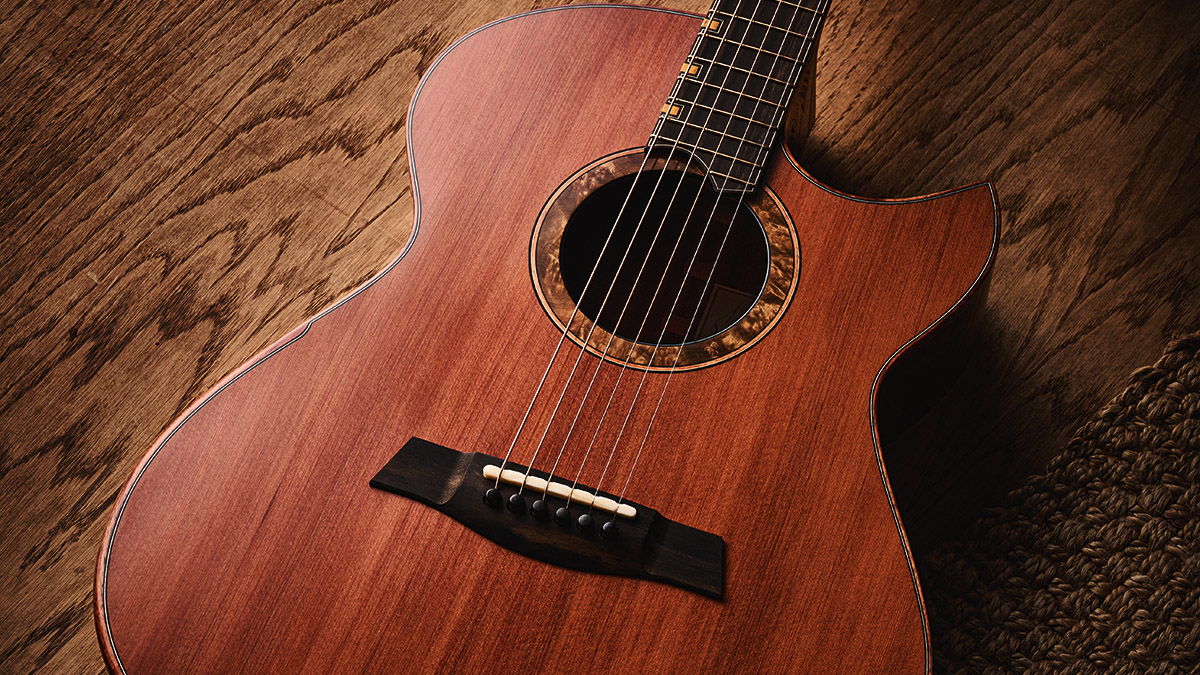Guitar World Verdict
Very few guitarists will have the expenditure to afford such an instrument, but the workmanship is faultless and the guitar is as much a work of art as it is a musical instrument.
Pros
- +
A superb hand-built piece of musical art.
- +
And it will only sound better with age.
- +
Plenty of custom options.
Cons
- -
Okay, the price may appear steep, but in the context of other sole builders out there, it’s on track for this level of instrument.
You can trust Guitar World
To begin with, let’s talk about the elephant in the room. This is not only the most expensive acoustic guitar we’ve ever welcomed into Guitarist, it’s the most expensive guitar we’ve ever reviewed. Period.
But a rare opportunity came our way to test drive a Ferrari-level instrument and we jumped at the chance to take a look at it. After all, we were as curious as you are to see exactly what is on offer when you go to the rarer atmosphere of the bespoke.
Turnstone guitars are built in the UK on the Surrey/Sussex border by Rosie Heydenrych. She makes around 20 instruments a year and her base price for an acoustic comes in at around £8,400 – and there’s a two-year waiting list.
Under normal circumstances, it’s almost impossible for us to get our hands on an instrument like the Turnstone TG because independent makers tend to build to order and if a customer has already waited a couple of years for their new guitar, they don’t want to wait another couple of months while we put it under the microscope.
In this instance, Rosie contacted us and said she had an instrument that was available and wondered if we’d like to take a look. We thought about it for a couple of seconds and said we would love to, and so here we are, looking at an instrument that represents the pinnacle of UK-made acoustics.
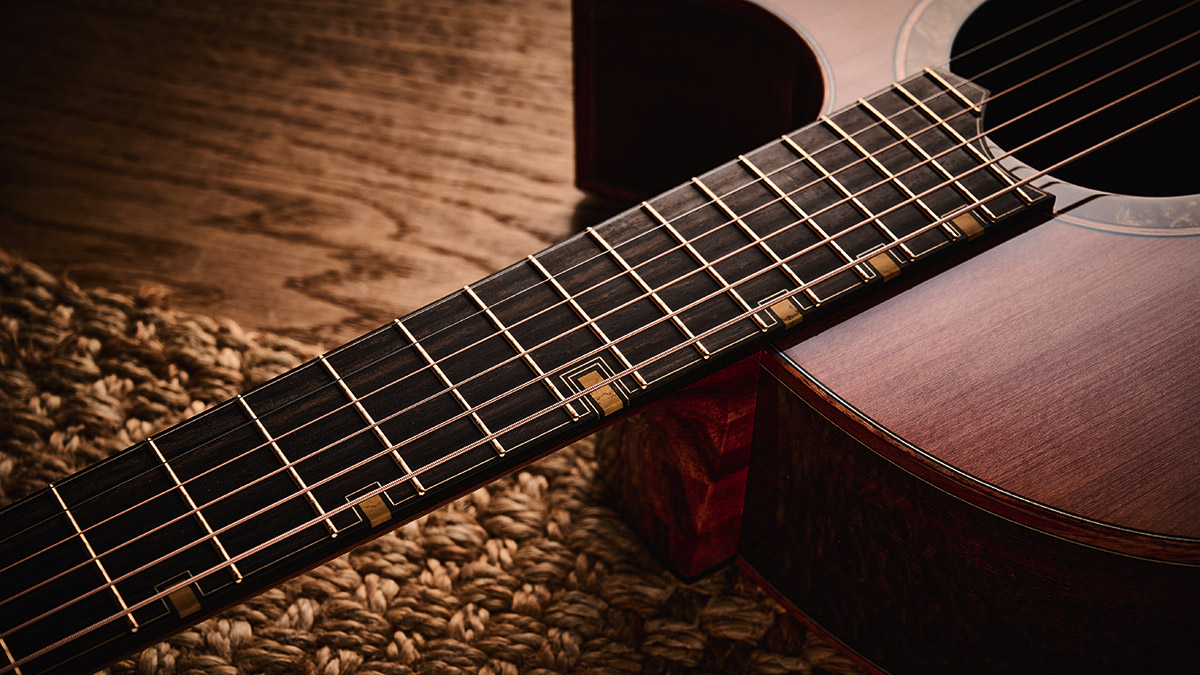
How exactly do you approach a review of an instrument at this level? The answer is very cautiously. The temptation was to treat it like it was made from eggshell, but a guitar is made to be played at any price point, and so while we proceeded with all due care and respect, we gave it the exact same treatment as we would an acoustic guitar from any brand or maker. Let’s have a look at what we found…
The Turnstone TG is a Grand Auditorium model and those familiar with this particular body size will agree that it’s arguably one of the more comfortable guitars to play, either sitting or standing. In that respect it challenges the mighty OM for sheer playability – neither too big, nor too small.
The top here is North American redwood, a timber that is similar in appearance to cedar but with a slightly more reddish hue. In recent years, redwood has been elevated to a superior tonewood, renowned for having some of the tonal characteristics of cedar – a fingerstyle-friendly warmth for one – but also it has a little of spruce’s brightness with a more robust midrange and a piano-like crisp sound.
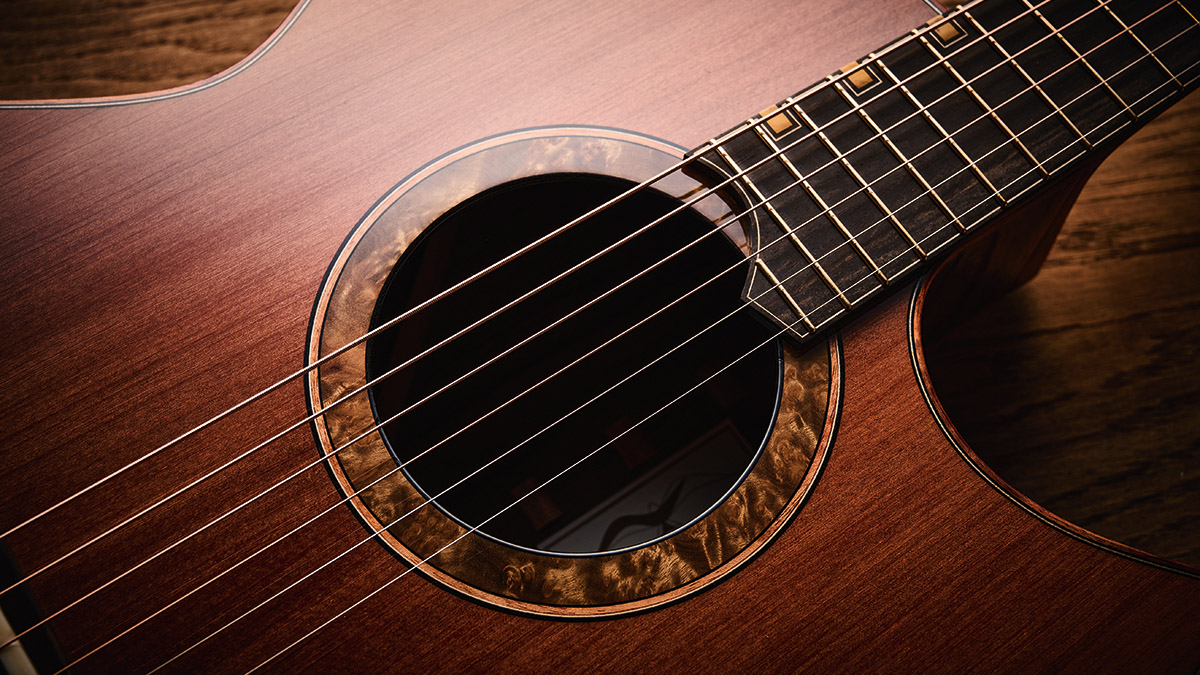
Back and sides are made from Madagascan rosewood, a wood that is now becoming regarded as a worthy substitute for the mighty Brazilian rosewood, both tonally and visually, the supplies of which are becoming more and more scarce. Madagascan rosewood – or ‘Maddie’, as it is called among the tonewood fanbase – is also veering towards a similar fate but is currently not on the endangered list.
The grain pattern on the TG is wild with that chocolate hue common to premium rosewoods. What can we expect from Maddie in the tonal spectrum? Good highs, a mighty bass response and punchy midrange; but that’s really only the tip of this particular tonal iceberg.
In our experience both Maddie and Brazilian rosewood mature to a majestic tonal level, with an almost supernatural sustain and complex overtones. There’s a sweetness there, too, and, as such, it’s no surprise that both these timbers – and indeed some of the other rosewoods available – are highly sought after by fingerstyle players.
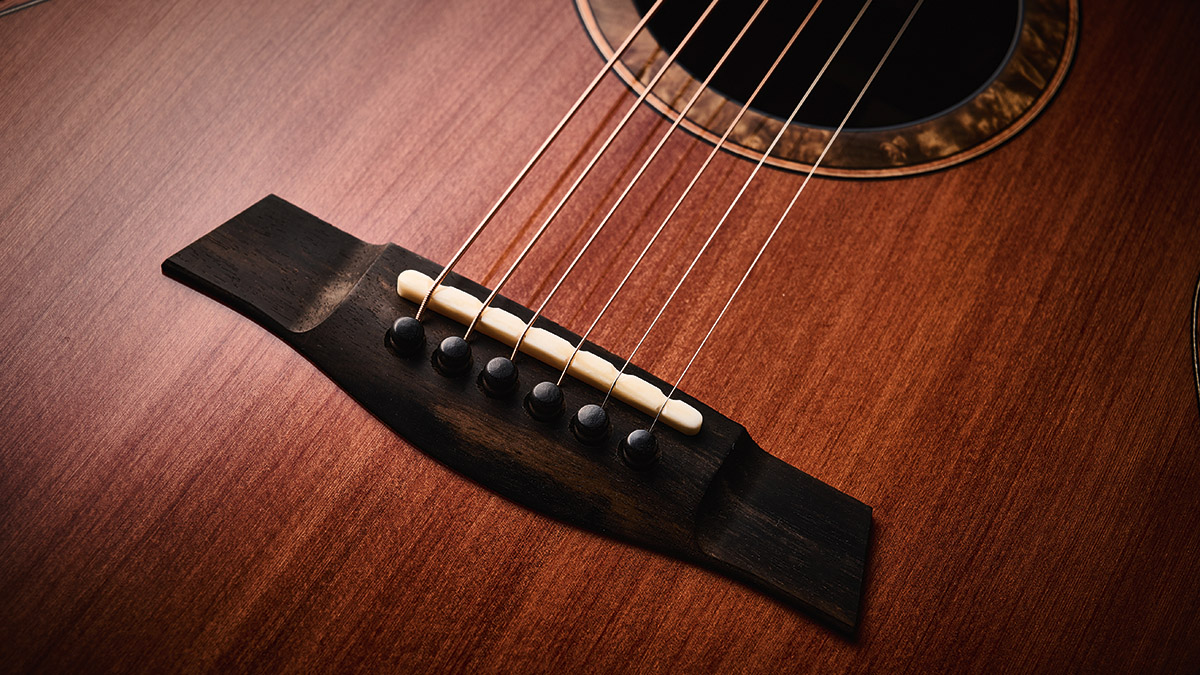
The body is bound with koa, with a bevel on the lower bout, player side. Unlike some armrest bevels we’ve seen this is very subtle, almost like the sharp edge has merely been rolled. It’s both simple and effective and we were amused to read in the spec sheet that it’s referred to as ‘Rosie’s Rollover’. A nice individual touch.
Koa makes another appearance as the neck of the TG, with a stripey, figured maple-like grain pattern. While it’s arguable that the wood used in the neck of an acoustic guitar has much less of an influence than those used for the soundbox, it still makes its presence felt. How many people swear that they can tell the difference between rosewood and maple necks on a Strat, for instance?
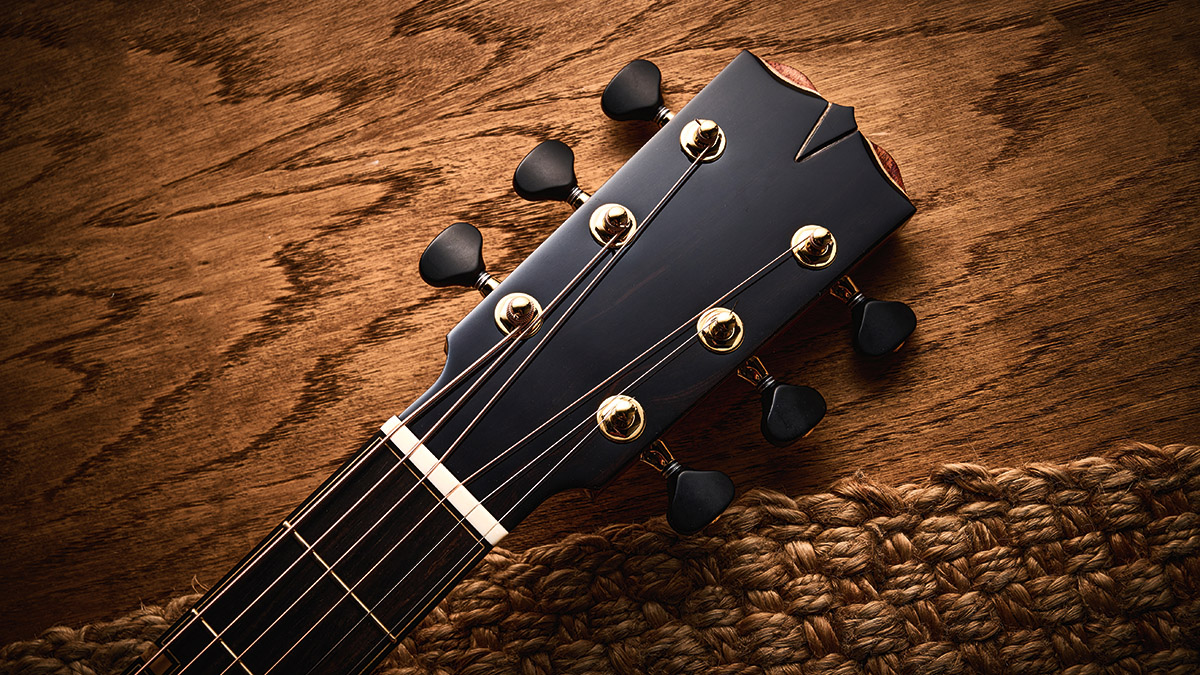
If you imagine that every wood used in the construction of an acoustic guitar could be looked at as balancing out the tonal output of the instrument like the controls on a hi-fi, then that’s an appropriate mindset to adopt. What does koa bring to the party?
Well, koa hails pretty much exclusively from Hawaii and is known for having a sparkly top-end with plenty of mids. But, as Andy Powers from Taylor Guitars once told us, koa has a tendency to offer a brittle treble response until it’s been played in for a while. He added that by the time you do your first string change you’ll certainly notice a difference.
The label inside the TG’s soundhole tells us that it only left the workbench in May this year. And this is something to consider; the woods of any new guitar are going to take a while to settle in and begin delivering their best tone. With a spruce top this could be a number of years, whereas cedar and redwood don’t take anywhere near as long.
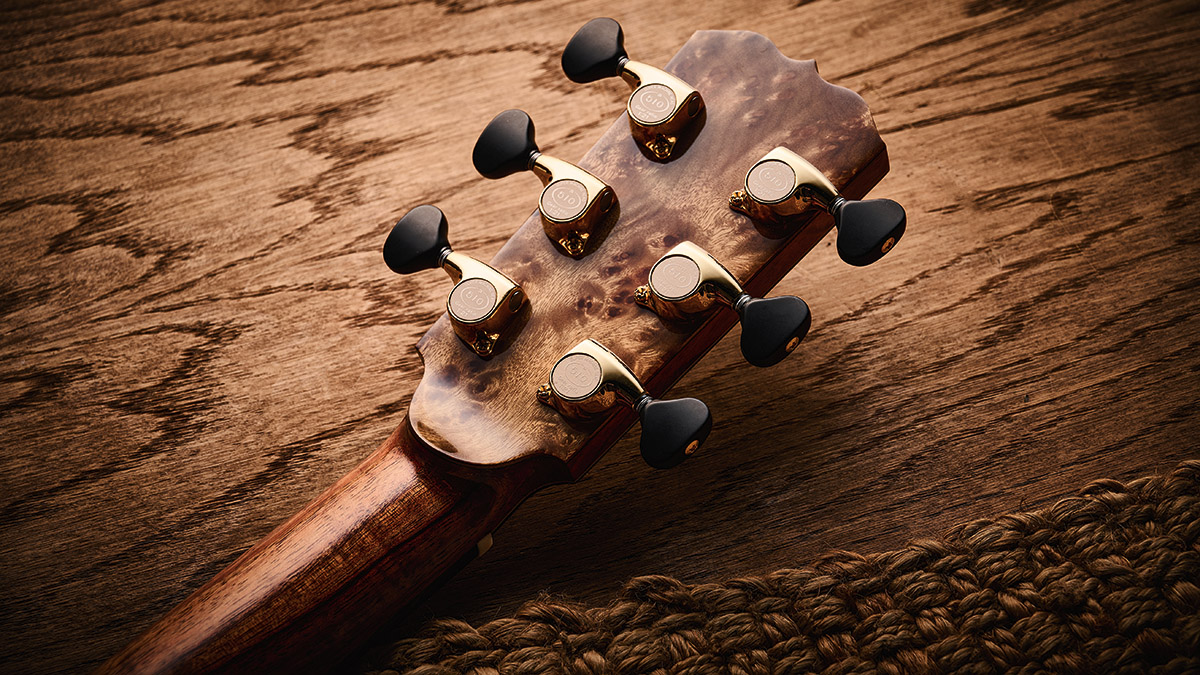
When the investment of time results in all the woods of a guitar essentially singing from the same hymnbook, that’s when you can say that the instrument has entered its prime. And this is something that is definitely worth waiting for.
Topping off the list of construction materials on the Turnstone TG, we have an ebony ’board and bridge, bone nut and saddle, a burl veneer to the back of the headstock and gold-coloured Gotoh 510 tuners to keep everything harmonious.
The quality of work here is immaculate and some of the best we’ve seen in an acoustic guitar. Nothing is out of place and everything has been done to the highest possible standards. But what exactly does it sound like?
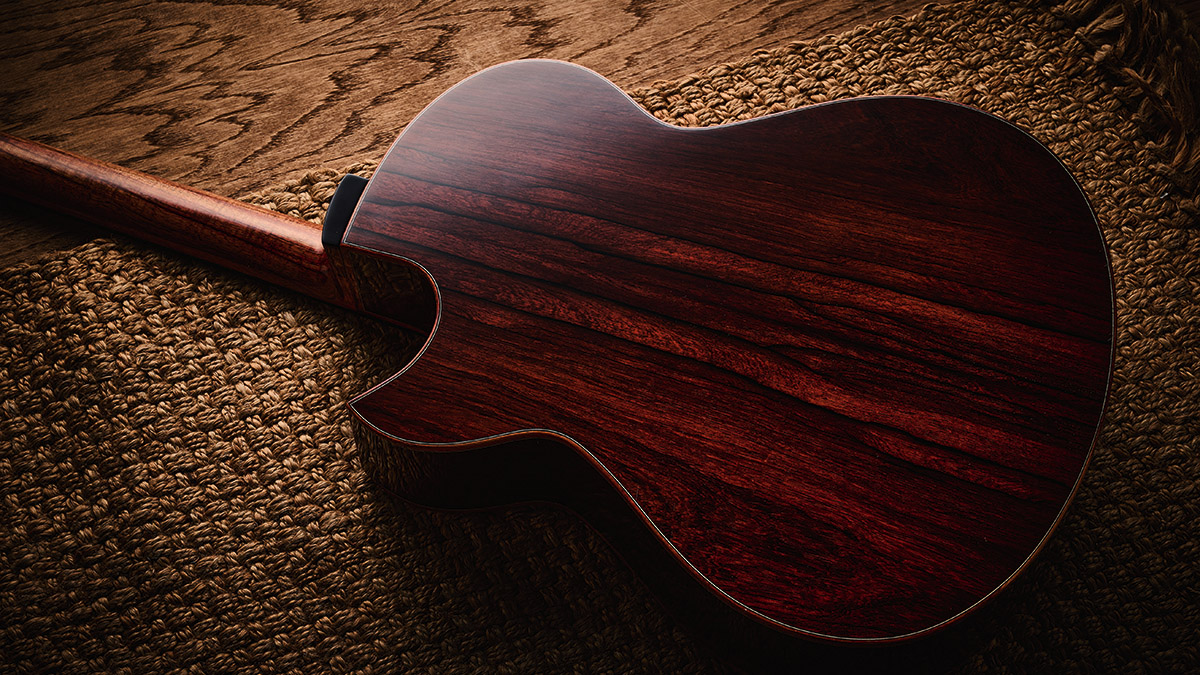
Feel & Sounds
It has to be said that this is one of the most comfortable new guitars we’ve encountered in recent years. The neck profile – described by Turnstone as being a “shallow C” – is supremely comfortable in the hand and the overall balance is very good indeed when played sitting down.
There are no strap pins on this guitar, but it’s worth remembering that Turnstone works to custom orders and were this your guitar and you wanted strap pins, you’d only have to ask.
We subjected the TG to a variety of playing styles – fingerstyle, strumming, single notes, and so on – and it fielded everything we threw at it with considerable finesse.
As luck would have it, acoustic guitar maestro Clive Carroll came by our studio during testing and we asked him if he would play a piece on video for us, the results of which can be viewed above. We would encourage you to take a listen. After all, describing how an instrument sounds – particularly one of this grade – is a precarious area to venture into, but the video will speak volumes.
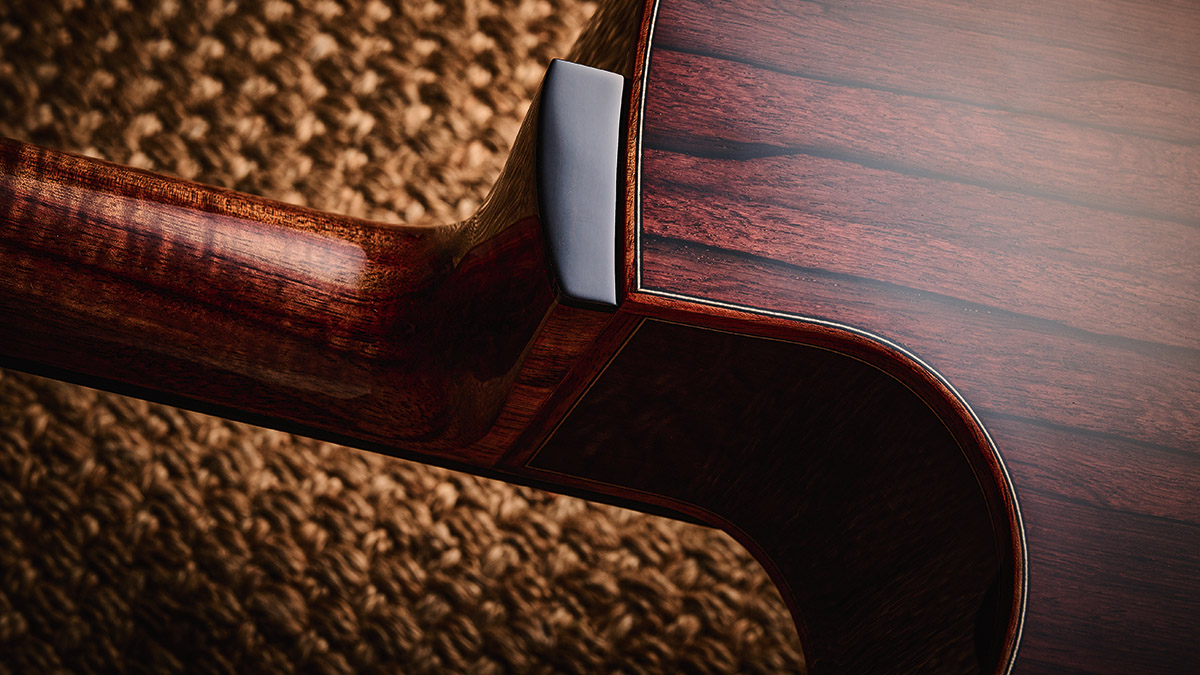
If we were to sum things up, though, everything you might expect from a top-end guitar is present: good basses, a midrange that’s completely mud-free and clear, with sweet trebles.
As we have said, this instrument still has to reach tonal maturity by being played in so that the woods have a chance to settle. Judging by what we’ve heard from high-end acoustic guitars in the past, the basses will bloom and the trebles will attain even greater sweetness over the passage of time. What’s there now surpasses any of the off-the-peg acoustics and time will bless it still further.
Verdict
This review was an adventure right from the start. It’s not every day that we come across a guitar of this stature and we thoroughly enjoyed the time we spent with it. Rosie’s workmanship is faultless and the guitar is as much a work of art as it is a musical instrument.
Its tonal development has just begun and as the years pass it will attain its own unique voice – and by that we mean does it sound like a Martin? No. A Taylor? No. It has a personality of its own and a voice of its own to match.
Sure, it’s a price level that few of us will ever have the opportunity to consider, but as an investment, especially from the point of view of its future tonal development, it’s an instrument that will bring joy to players and audiences alike.
Specs
- PRICE: £12,240 (approx $14,829; inc Hiscox case)
- ORIGIN: UK
- TYPE: Grand Auditorium
- TOP: North American Redwood
- BACK/SIDES: Madagascan Rosewood
- MAX RIM DEPTH: 110mm
- MAX BODY WIDTH: 395mm
- NECK: Figured koa
- SCALE LENGTH: 650mm (25.59”)
- TUNERS: Gold coloured Gotoh 510 with black buttons
- NUT/WIDTH: Cattle bone/44.5mm
- FINGERBOARD: Ebony with custom stone markers
- FRETS: 20.5 Evo gold
- BRIDGE/SPACING: Ebony with cattle bone saddle/53mm
- WEIGHT (kg/lb): 1.88/4.16
- OPTIONS: Base model is £8,400 w/ Sitka spruce or Red Cedar top, mahogany or English walnut back and sides. Upgrades to our review model includes North American Redwood top (£270), Madagascan rosewood b/sides (£960), koa neck (£420), arm bevel (£420). See website for more options
- RANGE OPTIONS: Other models include the TD, TG and TS (see the interview with Rosie for more details) and the E Series made from English timbers
- LEFT-HANDERS: Yes
- FINISH: High gloss
- CONTACT: Turnstone Guitar Company
With over 30 years’ experience writing for guitar magazines, including at one time occupying the role of editor for Guitarist and Guitar Techniques, David is also the best-selling author of a number of guitar books for Sanctuary Publishing, Music Sales, Mel Bay and Hal Leonard. As a player he has performed with blues sax legend Dick Heckstall-Smith, played rock ’n’ roll in Marty Wilde’s band, duetted with Martin Taylor and taken part in charity gigs backing Gary Moore, Bernie Marsden and Robbie McIntosh, among others. An avid composer of acoustic guitar instrumentals, he has released two acclaimed albums, Nocturnal and Arboretum.
“Among the most sought-after of all rhythm guitars… a power and projection unsurpassed by any other archtop”: Stromberg has made a long-awaited comeback, and we got our hands on its new Master 400 – a holy grail archtop with a price to match
The heaviest acoustic guitar ever made? Two budding builders craft an acoustic entirely from concrete because they “thought the idea was really funny”
